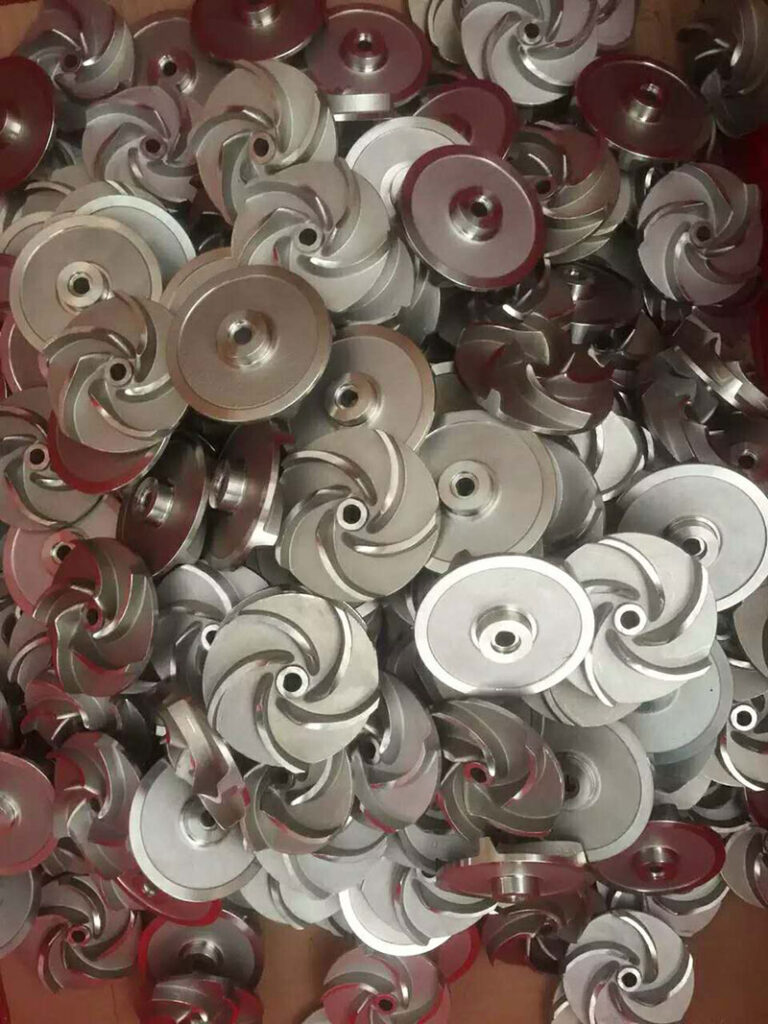Introduction
The global hydrogen economy demands valves capable of withstanding -253℃, the boiling point of liquid hydrogen—91℃ colder than LNG and presenting unique material challenges. As hydrogen embrittlement and extreme thermal contraction threaten conventional valve designs, our development of specialized casting solutions is enabling safe, reliable hydrogen infrastructure. Through material innovation and precision manufacturing, we’ve achieved zero-failure performance in valves supplying major hydrogen projects across Europe and North America.
1. The Unique Challenges of Liquid Hydrogen Service
1.1 Extreme Temperature Demands
Comparative Temperature Analysis:
| Fluid | Boiling Point | Relative to LH₂ |
|---|---|---|
| Liquid Hydrogen (LH₂) | -253℃ | Baseline |
| Liquid Nitrogen (LN₂) | -196℃ | +57℃ warmer |
| LNG | -162℃ | +91℃ warmer |
Material Impacts at -253℃:
- Thermal Contraction: 0.3% dimensional change from room temperature
- Toughness Requirements: Charpy V-notch >100J at service temperature
- Hydrogen Embrittlement: Atomic hydrogen diffusion acceleration
1.2 Hydrogen-Specific Failure Modes
Embrittlement Mechanisms:
- HEA (Hydrogen Environment Assisted): Surface-initiated cracking
- HELP (Hydrogen Enhanced Localized Plasticity): Reduced ductility
- HEDE (Hydrogen Enhanced Decohesion): Interatomic bonding weakening
Industry Standards Compliance:
- ASME B31.12: Hydrogen Piping and Pipelines
- ISO 21009: Cryogenic vessels – Static vacuum-insulated vessels
- ESA: European Space Agency hydrogen components
2. Material Selection Strategy
2.1 Austenitic Stainless Steel Innovations
Enhanced 316L for Hydrogen Service:
- Carbon Control: ≤0.020% (L-grade requirement)
- Nickel Content: 12-15% for austenite stability
- Molybdenum: 2.5-3.0% for pitting resistance
- Nitrogen Addition: 0.10-0.16% for strength enhancement
Special Melting Practices:
- VIM (Vacuum Induction Melting): Reduces gaseous impurities
- VAR (Vacuum Arc Remelting): Improves cleanliness and homogeneity
- ESR (Electroslag Remelting): Superior solidification control
2.2 Aluminum Alloys for Weight-Sensitive Applications
AA 2219-T87 Advantages:
- Cryogenic Toughness: Excellent at -253℃
- Weldability: Proven in aerospace applications
- Thermal Conductivity: 3× better than stainless steel
Composition Control:
text
Cu: 5.8-6.8% Mn: 0.20-0.40% Ti: 0.02-0.10% Zr: 0.10-0.25%
2.3 Novel Material Development
High-Manganese Austenitic Steels:
- Mn Content: 22-25% for austenite stabilization
- Cost Advantage: 40% reduction vs nickel-alloyed steels
- Performance: Adequate for moderate-pressure applications
3. Manufacturing Process Breakthroughs
3.1 Precision Investment Casting Adaptations
Shell System Modifications:
- Prime Coat: Nano-zirconia for dimensional stability
- Backup Layers: Hybrid silica-alumina system
- Special Binders: Low-hydrogen organic formulations
Pouring Protocol for Hydrogen Service:
| Parameter | Standard Casting | Hydrogen Valve Casting |
|---|---|---|
| Melt Temperature | 1600±20℃ | 1580±5℃ |
| Pouring Speed | 3-5 kg/sec | 1.5-2.5 kg/sec |
| Mold Preheat | 800℃ | 950℃ |
| Solidification Control | Conventional chills | Directional solidification |
3.2 Heat Treatment Optimization
Solution Annealing for Hydrogen Resistance:
- Temperature: 1100℃ for complete carbide dissolution
- Quenching: Rapid water quench to prevent sensitization
- Special Consideration: Avoid hydrogen pickup during processing
Cryogenic Stabilization Treatment:
- Cycle: Room temperature → -253℃ → Room temperature
- Duration: 24-hour minimum at temperature
- Benefit: Stress relief and dimensional stabilization
4. Quality Assurance for Hydrogen Service
4.1 Non-Destructive Examination
Enhanced Testing Protocol:
- Radiography: 100% volumetric examination
- Phased Array UT: Weld and critical area inspection
- Liquid Penetrant: All surfaces for surface defects
- Helium Mass Spectrometry: Leak testing <10⁻⁹ mbar·L/sec
4.2 Hydrogen-Specific Testing
Embrittlement Testing:
- Slow Strain Rate Test (SSRT): ASTM G142 compliance
- Fracture Mechanics: J-integral testing at cryogenic temperatures
- Sustained Load Testing: 1000+ hours at design pressure
Cryogenic Performance Validation:
- Thermal Cycling: 50 cycles minimum (-253℃ ↔ RT)
- Seat Leakage: Class VI at cryogenic temperature
- Operational Testing: Torque and cycle life verification
5. Case Study: Liquid Hydrogen Loading Arm Valves
Project Background:
- Application: LH₂ transfer between storage and transport
- Size Range: 3″ to 12″ ball valves
- Design Conditions: -253℃, 45 bar working pressure
- Standards: ASME B31.12, ISO 21009
Technical Challenges:
- Thermal Contraction Mismatch: Different materials in assembly
- Hydrogen Permeation: Seal integrity maintenance
- Cycle Life: 10,000+ operations requirement
Solutions Implemented:
- Material Selection: VIM-VAR 316L for body, special polymers for seats
- Design Features: Thermal expansion compensation mechanism
- Manufacturing Control: Cryogenic stabilization of all components
Performance Results:
- Leakage Rate: <10⁻⁶ mbar·L/sec helium equivalent
- Cycle Life: 15,000+ cycles without maintenance
- Field Performance: 3 years operation with zero failures
6. Technical Comparison: Hydrogen vs Conventional Cryogenic Valves
| Parameter | LNG Valve (-162℃) | LH₂ Valve (-253℃) |
|---|---|---|
| Material Grade | ASTM A351 CF8M | VIM-VAR 316L |
| Impact Energy | 40J @ -196℃ | 100J @ -253℃ |
| NDE Extent | 20% RT | 100% PAUT + RT |
| Testing | Ambient seat test | Cryogenic seat test |
| Design Life | 20 years | 30 years |
| Cost Factor | 1.0 | 2.5-3.0 |
7. Implementation Roadmap
Phase 1: Design and Material Qualification (8-10 weeks)
- Hydrogen service material selection
- Prototype manufacturing and testing
- Design validation against applicable codes
Phase 2: Process Development (6-8 weeks)
- Manufacturing procedure qualification
- Welding procedure specification development
- NDE procedure validation
Phase 3: Production and Certification (10-12 weeks)
- Quality plan implementation
- Third-party inspection and certification
- Documentation package preparation



One Response
Why Choose Our Hydrogen Valve Solutions?
✔ Proven Experience: 200+ hydrogen valves in service
✔ Full Certification: ASME, PED, ISO 21009 compliance
✔ Technical Leadership: Active in hydrogen code development
✔ Testing Facilities: In-house cryogenic testing capability
✔ Global Support: Service network in 15+ countries